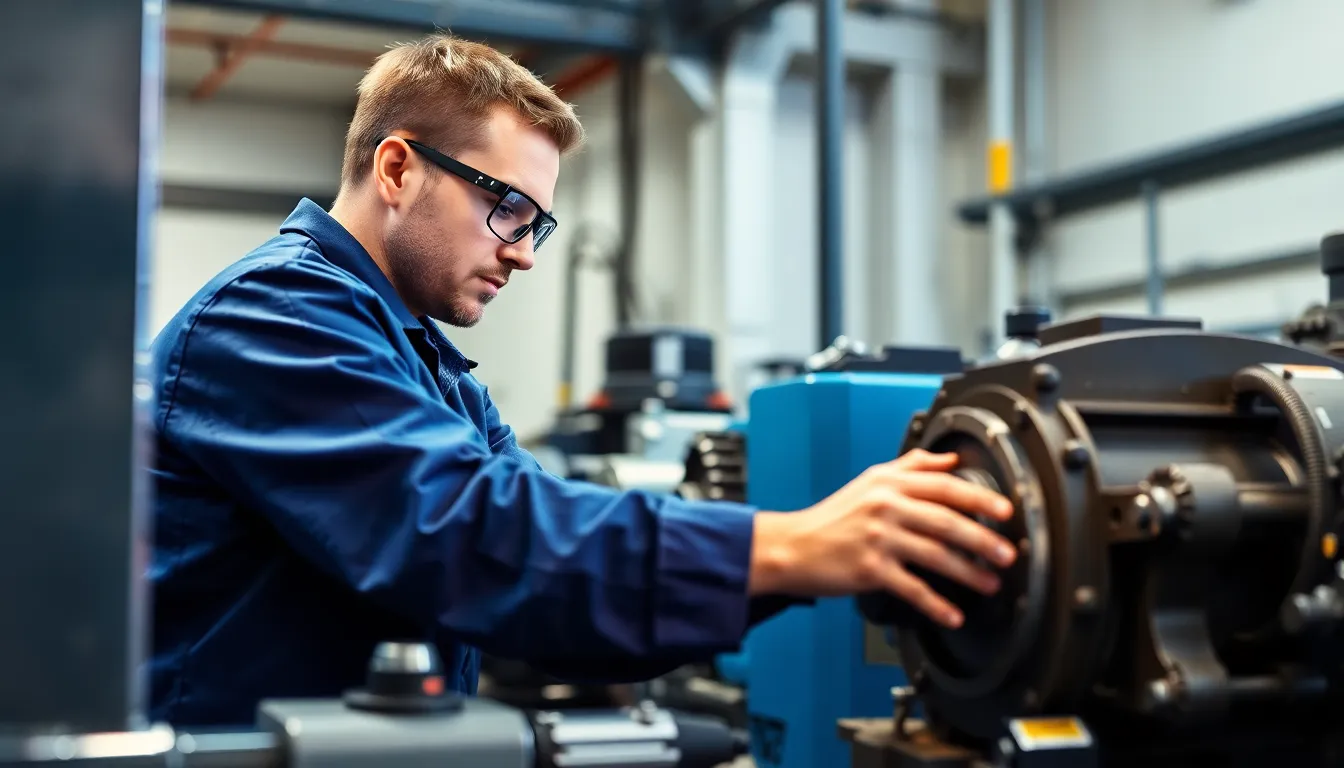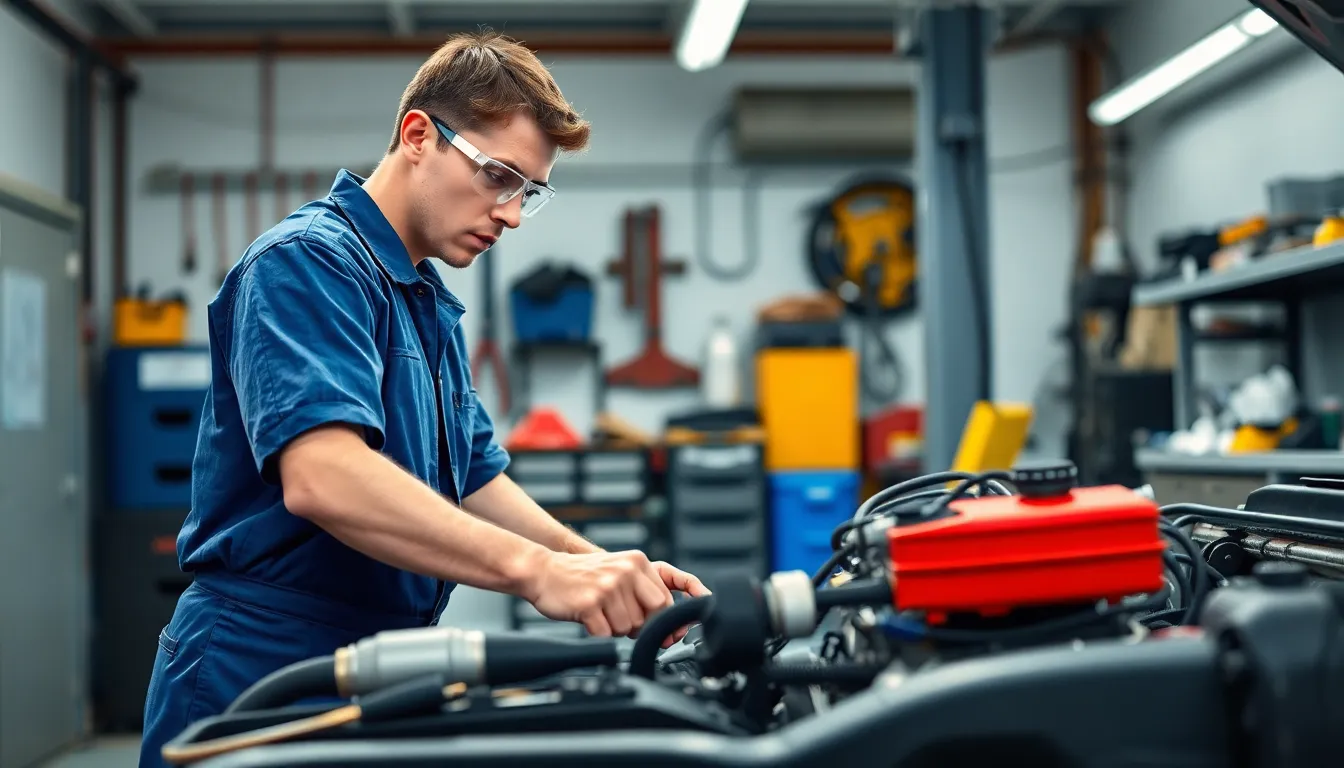When it comes to keeping things running smoothly, maintenance and repair are like the dynamic duo of the mechanical world. Imagine maintenance as the diligent superhero who swoops in regularly, ensuring everything’s in tip-top shape. On the other hand, repair is that last-minute lifesaver who shows up when disaster strikes—think of them as the fire extinguisher of your home or office.
Understanding the difference between these two can save time, money, and a whole lot of headaches. Maintenance is all about prevention, while repair is the heroic response to neglect. So, before that squeaky door turns into a full-blown crisis, let’s dive into the world of maintenance versus repair and discover how to keep those pesky problems at bay. After all, who wants to be the star of a DIY disaster movie?
Table of Contents
ToggleUnderstanding Maintenance Vs Repair
Maintenance and repair play vital roles in the mechanical world. Maintenance emphasizes ongoing care, while repair focuses on fixing issues.
Definition of Maintenance
Maintenance refers to the regular actions taken to preserve equipment efficiency. It includes routine inspections, cleaning, and adjustments designed to prevent breakdowns. Scheduled maintenance tasks, such as oil changes and filter replacements, contribute to longer asset lifespans. By maintaining equipment systematically, businesses can recognize potential problems early, reducing downtime and overall costs.
Definition of Repair
Repair involves actions taken to restore equipment functionality after failure. This process occurs when a device or system malfunctions or breaks down unexpectedly. Repair tasks may include replacing worn-out components or fixing damaged parts. Addressing problems promptly prevents further damage and restores operational ability. Relying solely on repair increases costs and frequencies of equipment failure due to neglected maintenance procedures.
Importance of Maintenance

Maintenance plays a crucial role in ensuring the longevity and efficiency of equipment and machinery. It proactively addresses potential issues before they escalate, minimizing the risk of unexpected failures.
Benefits of Regular Maintenance
Regular maintenance yields numerous advantages. Consistent inspections enhance equipment reliability, significantly reducing the likelihood of breakdowns. Improved performance often results in increased productivity, allowing operations to run smoothly without interruptions. Moreover, regular maintenance promotes safety by identifying hazards before they cause accidents. Maintaining equipment under optimal conditions strengthens its lifespan, leading to better resource utilization. Companies benefit from reduced downtime, allowing them to meet operational targets more efficiently.
Cost-Effectiveness of Maintenance
Cost-effectiveness becomes evident through diligent maintenance. Proactive upkeep lowers the risk of major repairs that can incur substantial expenses. Consistent maintenance tasks, like oil changes or filter replacements, are generally cheaper than emergency repairs. Savings extend to reduced energy consumption, as well-kept equipment often operates more efficiently. Additionally, routine maintenance extends asset lifespan, delaying replacement costs. Allocating resources to regular maintenance ultimately results in significant long-term financial benefits for businesses, enhancing overall operational budgets.
When to Choose Repair
Recognizing when to choose repair over maintenance is essential for efficient equipment management. Several indicators suggest that repair is necessary.
Signs That Repair Is Necessary
Failure to start the equipment often signals a need for repair. Unusual noises, such as grinding or knocking sounds, suggest that internal components could be malfunctioning. Increased operational costs might indicate inefficiencies. Frequent breakdowns lead to disruptions, suggesting underlying issues needing immediate attention. Additionally, visible wear and tear, like cracks or leaks, signal that parts require replacement.
Different Types of Repairs
Equipment repairs can vary widely based on the issue. Mechanical repairs address problems with moving parts or systems. Electrical repairs focus on issues within the electrical components like wiring or circuit boards. Software repairs involve troubleshooting and fixing issues within operating systems. Structural repairs mainly deal with physical damage to the equipment’s body or framework. Regular inspection allows for timely identification of the type of repair needed, minimizing potential downtime.
Key Differences Between Maintenance and Repair
Maintenance emphasizes proactive actions aimed at preventing equipment failure. Regular inspections, cleaning, and adjustments fall under this category, ensuring machinery runs efficiently over time. Maintenance serves as an investment in longevity, contributing to improved reliability and reduced costs.
Repair, on the other hand, responds to situations where equipment has already failed. Restoring functionality becomes the primary focus when unexpected breakdowns occur. Repair often incurs higher costs due to emergencies and downtime, which can disrupt operations significantly.
While maintenance focuses on prevention, repair addresses issues that arise from neglect. Employees noticing unusual noises or increased operational costs indicate a need for repair rather than keeping up with regular maintenance tasks. Each repair type, such as mechanical or electrical, targets specific issues to restore normal operation.
Understanding these differences helps in decision-making for efficient equipment management. When equipment fails to start or shows visible wear, seeking repair becomes essential. Ignoring maintenance leads to frequent repairs, creating a cycle of costs that could have been avoided.
Recognizing the signs of wear early through consistent maintenance can mitigate the need for emergency repair. Businesses can achieve significant savings by prioritizing scheduled maintenance over reactive repair efforts. Awareness of both maintenance and repair ensures the longevity of assets and optimizes overall performance.
Understanding the differences between maintenance and repair is crucial for effective equipment management. Proactive maintenance not only extends the lifespan of assets but also enhances efficiency and reduces costs. By prioritizing regular upkeep, businesses can avoid the pitfalls of unexpected repairs and the financial strain they bring. Recognizing early signs of wear ensures timely intervention and minimizes downtime. Embracing a culture of maintenance fosters reliability and performance while safeguarding against future issues. Ultimately, a balanced approach to both maintenance and repair leads to a more sustainable operational strategy.



